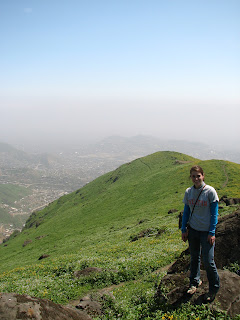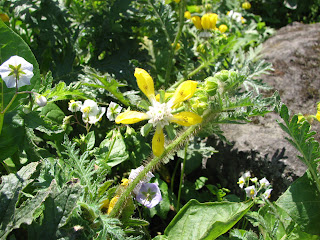It may have been a misnomer to call my vacation "mini" but I did cram a lot of good stuff into a short amount of time. Usually the HNGR interns get one week to vacation and take a break from work so I took mine with my friends Erica and Sara who are also interning in Peru. We also traveled with one of my Peruvian friends, Miriam, who acted as a sort of guide for us. Peru is an absolutely beautiful country with so many diverse ecosystems and cultures. And, since I planned most of our trip, I made sure to see as much of it as I could.

We started our trip by flying to Puerto Maldonado which is the jungle in eastern Peru. It was 95 degrees Fahrenheit when we landed and was super humid! This was quite a change of environment from the 60 degree weather we had been having in Lima. We hopped on a boat and traveled four hours down the Madre de Dios river until we reached a small stream leading to Lago Valencia, an oxbow lake adjacent to the river. From that point we were engulfed in the wild and were the only ones staying in this small "lodge" on the lake. We saw many birds, including bright green parrots, and enjoyed learning about all the medicinal plants from the locals. At night, the jungle was alive with sounds and, thanks to the mosquito net surrounding my bed, the very cool (and large) insects left me to sleep in peace.

After a day and a half in la selva we traveled 12 hours west to Cusco, an Andean town situated among the mountains. Historically, it was the center of all Incan activity and is surrounded by ancient ruins. The city is also full of old Spanish colonial buildings from the fifteenth century. Although the fall of the Incan empire and destruction of their culture was related to Spanish invasion, the infusion of these two cultures in Cusco creates an enchanting mountain village. The streets are lined with Quechua-speaking women and their herbs, which they gathered from their fields, are displayed on brightly colored blankets. The cathedral bells toll in the early morning calling the villagers to mass. And, only 20 minutes away by van, are the ruins of the Incan city of Pisac nestled among the mountain slopes.

Obviously, one cannot go to Cusco without also going to the mother of all Incan ruins; Machu Picchu. It was as great as all the hype made it out to be. We got up at 5am to take the first bus up to the top of the verdant cliffs and watched the sun slowly shed light on the ancient city as it rose over the mountains. It was a beautiful morning and since we beat the crowds, it was peaceful and quiet. We then climbed up Huanupicchu (the large mountain behind me in the classic pic of Machu Picchu) and looked out over the ruins from the highest point of the trail. It was quite the hike and was intensified by the fact that our bodies had not acclimated to the altitude yet. But, the view was totally worth the effort!

We spent one more day in Cusco before heading to Puno, a small town situated on Lago Titicaca. This lake is the highest in the world at 13,000 feet and is shared with Boliva. We traveled across this vast lake to visit two different islands. The community of the Uros have constructed floating islands make from peat and dried vegetation. It was fascinating to see how they have innovatively created their homes from natural materials and have weathered storms and substantial rain. We stayed overnight with a peasant family on the second island and ate delicious food. The father Juan reminded me so much of one of the Alaskan Elders I met this summer. He told about his struggles as a cultural minority, the slow disappearance of his native language among the youth, and the adverse effects of climate change in his community. We live in a big world but we can be so very connected through the stories and experiences of daily life.
The stars that night were brilliant and we saw the Southern Cross and a particularly bright Jupiter. We returned to Puno in the morning and I had Trucha for lunch - the famous Titicaca fish. We got back to Lima this morning after flying out from Juliaca and were tired but very content. What a trip! This is a brief overview, and of course there is much more to tell, but suffice it to say I have fallen even more in love with this beautiful country.
Tomorrow it is back to work and my nose is to the ground as I finish out my last two months here. How fast the time has flown by! I am looking forward to it but it will be busy. Who knows what other adventures may be around the corner....


 Most of this week has been filled with work to make up for my time spent away but, since today was feriado or holiday, the whole family went to a festival sponsored by the church. There was food, games, and entertainment for the nearly 3,000 members wandering around the plaza. One of the "fun" games is to pay the "police" to throw someone in "jail." Then the incarcerated have to wait until someone bails them out. I think a picture in this case is worth a 100 words. I was thrown in jail 3 times! Poor gringa.
Most of this week has been filled with work to make up for my time spent away but, since today was feriado or holiday, the whole family went to a festival sponsored by the church. There was food, games, and entertainment for the nearly 3,000 members wandering around the plaza. One of the "fun" games is to pay the "police" to throw someone in "jail." Then the incarcerated have to wait until someone bails them out. I think a picture in this case is worth a 100 words. I was thrown in jail 3 times! Poor gringa. 


























































